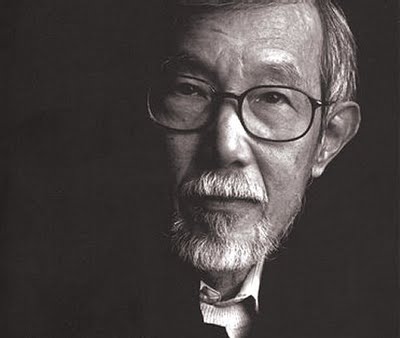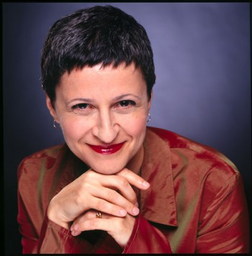On Wednesday August 10, the Proms celebrated the upcoming 75th birthday of Steve Reich with a late night concert of his music performed by Ensemble Modern, Synergy Vocals, Mats Bergström, and Reich himself. In its early days, when it was first getting to be known, minimalism was perceived (and, often, presented) in negatives: it was generally supposed to be about what its composers and their fans didn’t like and were reacting against (did that make it reactionary?) They were tired of dissonant, “ugly,” chromatic music (surely this applied as much to Coltrane, Cecil Taylor, Ornett Coleman, and Captain Beefheart as to Milton Babbitt and Elliott Carter), but also of music whose alleged structure could be hard to perceive on the surface of the music and whose harmonic motion and direction was unclear. They were also interested in certain non-western rhythmic practices (an interest they shared with people like Carter). The negatives didn’t need to be stressed, of course, since there were and are plenty of positives. In Reich’s case it includes the diatonic purity of the notes and the clear and compelling trajectory of the harmony. It also includes the use of material as carefully and expertly designed and constructed as that of the Bach Inventions, that carefully considered and skillfully realized construction being required in order for those complex pieces to work as well as they do.
The program began with Reich and Rainer Römer performing Clapping Music, one or his most elegant and effective pieces. It is the clearest and simplest example of his early practice of phasing and certainly a demonstration of Reich’s early insistence that one had to be able to perceive the structure of a piece in real time as it was progressing. A rhythm is superimposed on itself, but shifted one beat at each repetition until it rotates around to its original position in “the bar.” My recollection is that each stage of the process of the piece is supposed to be done twelve times, but in this performance it was fewer and not always the same number of repetitions. For me the truncation caused it to lose some of its effect.
As Reich’s music developed greater complexity it of necessity lost the clarity of immediate perceptibility of structure which he had required early on. Paul Griffiths’s program note mentioned Reich’s citing of the music of Perotin as relation of his, but in Perotin’s music one hears the cantus not as a tune but as a series of drones whose exact lengths and their relationship one to another are imperceptible. The structure of the other two works on the concert were, therefore, much less easily followed than was that of Clapping Music. In the various Counterpoint pieces a solo instrument picks out of a complex canonic texture (which could be either recorded or performed by a number of the same instruments live) resultant lines; by now there are several of these for various instruments, including flute, clarinet, and ‘cello.. Mats Bergström (using the recorded option) performed the one entitled Electric Counterpoint, for electic guitar, which Reich wrote in 1987 for Pat Matheny with great aplomb.
The big work on the concert was Music for 18 Musicians, written by Reich in 1974 and 76 for an early major concert of his work at Town Hall in New York, marking a milestone both in his development as a composer and his general acceptance as a major figure. Reich’s music is very difficult and requires great care, concentration, and seriousness in preparation, especially when, as in this piece, it has to be done without a conductor. During his early years, Reich refused to publish the music and kept very tight control over who was allowed to play it in order to avoid bad performances. This performance (which actually involved 19 players on the stage) had high style and great ease, and was very exciting and effective, as any good realization of such exciting music would be. Whether it exactly sounded like a ‘joy machine,’ which is how Paul Griffiths program note described it, is an open question. The very large audience received all of the performances on the concert with unalloyed enthusiasm.
On the August 9th Prom, The BBC National Orchestra of Wales with clarinetist Robert Plane and Philippe Schartz playing flugel horn, conducted by Fançois-Xavier Roth, presented the first London performance of Centauromachy by the orchestra’s Composer-in-Association, Simon Holt. The title refers to the mythical creatures, the centaurs, which had the torso of man combined with the hindquarters of a horse. Holt’s work, which is a concerto for clarinet and flugel horn, is concerned with evoking various aspects of the stories about the centaurs rather than depicting those stories in some sort of narrative form. The first movement, which is for the soloists unaccompanied (conducted in this performance), suggests the two natures of the creatures: wise and intelligent, but also impulsive and lustful. The second, portraying Chiron, the wisest and kindest of the centaurs, in a state of dreaming, continues the dialog of the soloists against the backdrop of the orchestra. The third, representing a centaur glimpsed through trees, presents the soloists playing contrasting parts in varying tempi laid over a recurring series of chords of irregular lengths in the orchestra, rhythmically independent of them. The fourth movement evokes the legendary battle between the centaurs and their cousins the Lapiths after their drunken misbehavior at a Lapith wedding. The final movement is elegy for Chiron, whose sacrifice of his life for that of Prometheus allowed humans the use of fire. Holt’s music is always expert and attractive, always compelling, and always effectively written for the instruments. Although it is supposed to have different movements and contrasting characteristics (a slow movement–the third–and a fast climactic one–the fourth, for instance) it seems really to be one more or less continuous piece, albeit with some breaks, in the same tempo, and to have throughout the same undifferentiated affect.
The Holt was preceded on the concert by two pieces by Frank Bridge (mostly known as Benjamin Britten’s teacher), the seventieth anniversary of whose death is being commemorated by performances of several of his works on this year’s Proms season. Enter Spring, an ebullient single movement which begins with a sort of mosaic of fragmentary melodic figures that coalesce over the duration of the piece into longer, more continuous phrases, is colorfully orchestrated and lilting. Blow Out, You Bugles, written in 1918 in the aftermath of the first world war, for tenor and orchestra, sets a sonnet of Rupert Brooke (who had died in the war), solemnly and a little in the patriotic manner of Elgar; to be the work of a pacifist, it is perhaps surprisingly triumphalist. Ben Johnson, the tenor soloist, sang beautifully. The following night’s Prom, by the BBC Philharmonic conducted by Vassily Sinaisky, also included a work of Bridge, his last, the Overture ‘Rebus’ of 1940. It also offered Gustav Holsts’s Invocation for ‘cello and orchestra, in which Juilian Lloyd Webber was the soloist. It is a highly effective piece which somehow got put aside after its first few performances in 1911 and remained unpublished and unperformed until recently.
All these concerts can be heard on the Proms website (http://www.bbc.co.uk/proms) for a week after the performance.












